US employment market: weakening but still relatively robust
While the US jobs market continues to be in a weakening trend, May’s BLS employment data continues to show an employment market that remains relatively robust.
Though given the Fed's aggressive tightening, a further material weakening is expected to lie ahead - let's unpack the details.
Beginning with the unemployment rate, we can see that a 3.7%, it remains historically low.
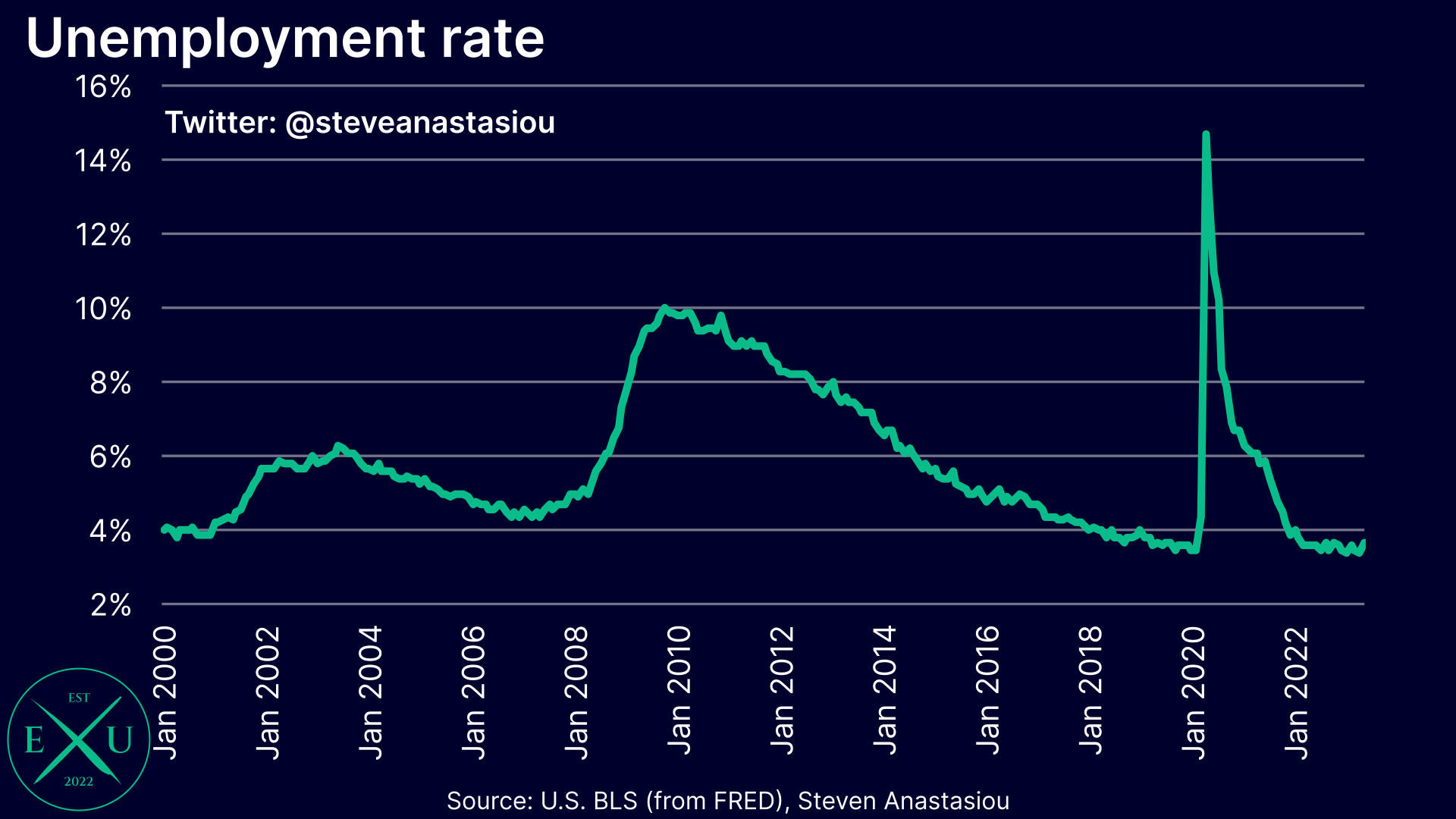
Though zooming in to analyse more recent trends, shows that May's increase in the unemployment rate took it to its highest level since October 2022.
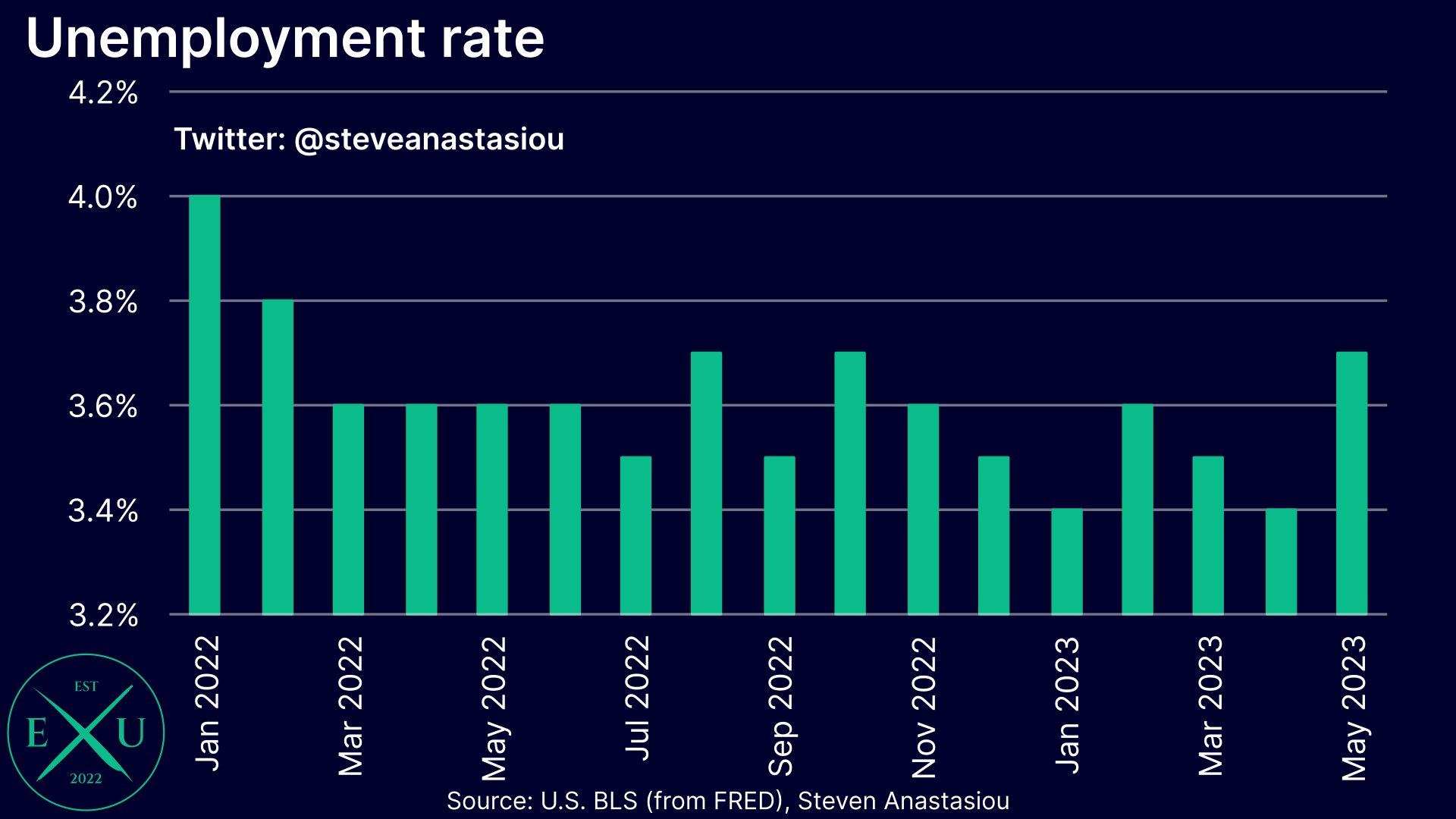
In order to prompt more concern from the Fed, and an impetus for a more nuanced approach to its monetary policy, the unemployment rate will likely need to show signs of a clear uptrend and break above 4%.
May's increase in the unemployment rate came as the household survey of employment recorded a decline of 310k - the largest monthly fall since April 2022.
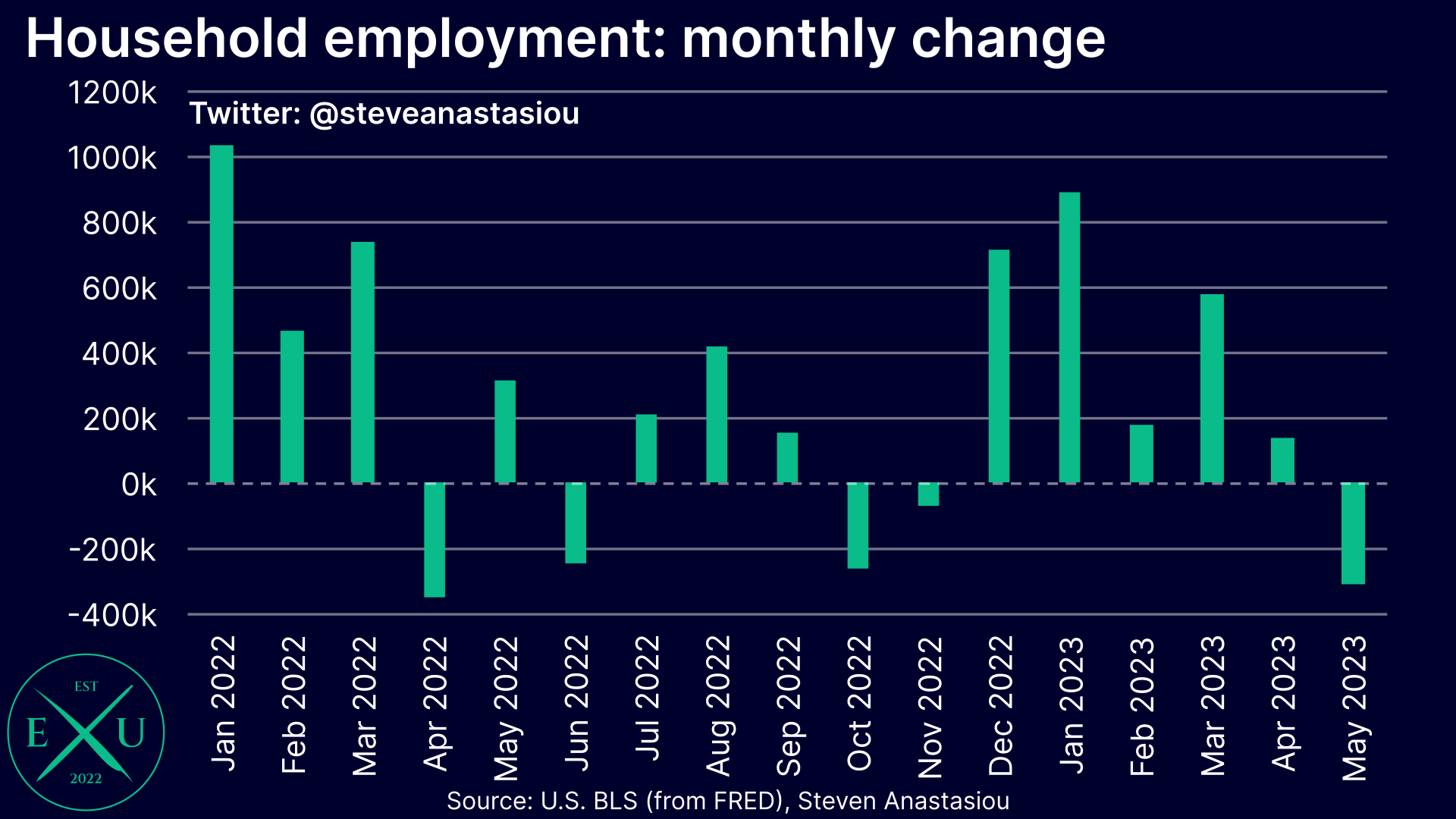
In contrast to the more volatile household survey, the establishment survey of employment recorded strong growth, rising by 339k in May.
Given the monthly volatility of jobs data, it's better to look at changes on a 3- or 6-month moving average basis.
Here, we can see that nonfarm payroll growth continues to remain in a downtrend. Though as opposed to signalling major weakness, nonfarm payroll growth still remains above pre-COVID levels.
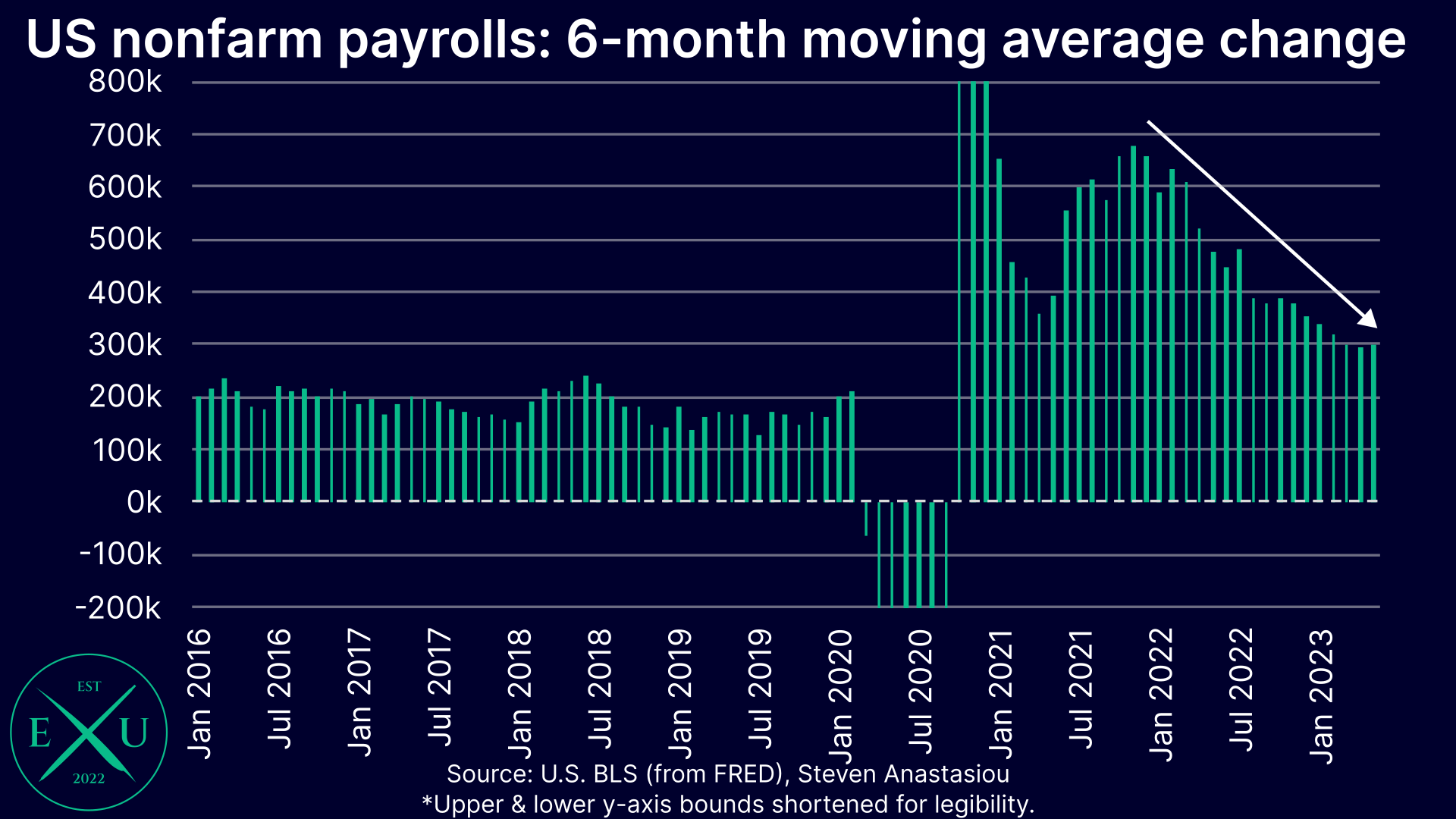
A more significant weakening has been seen in private payrolls, where growth has largely fallen back to levels that were seen pre-COVID.
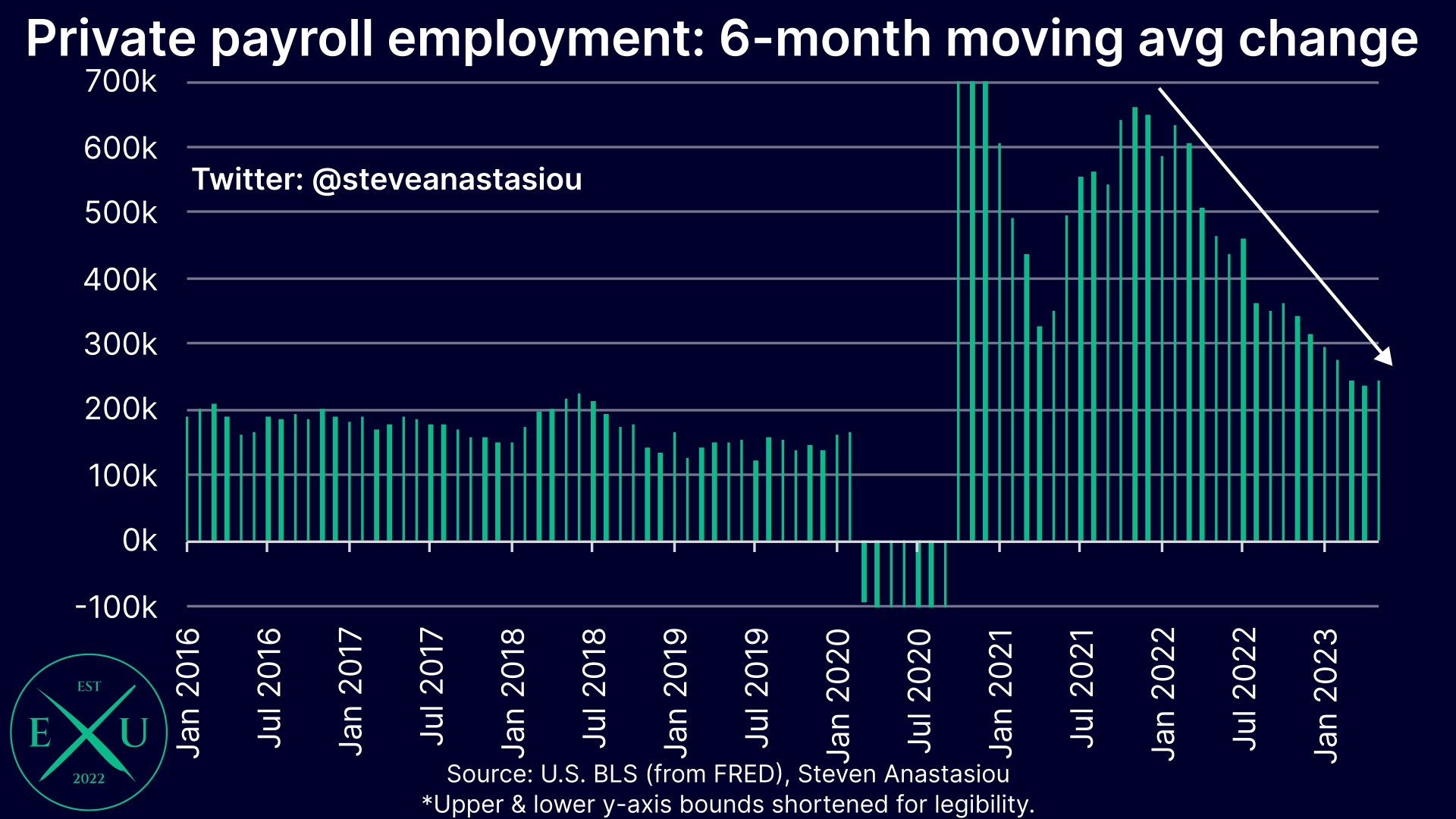
Given that overall nonfarm payroll growth continues to be noticeably above its historical average, payroll strength is instead coming from government payrolls, which on a 6-month moving average basis, are above peak COVID rehiring levels.
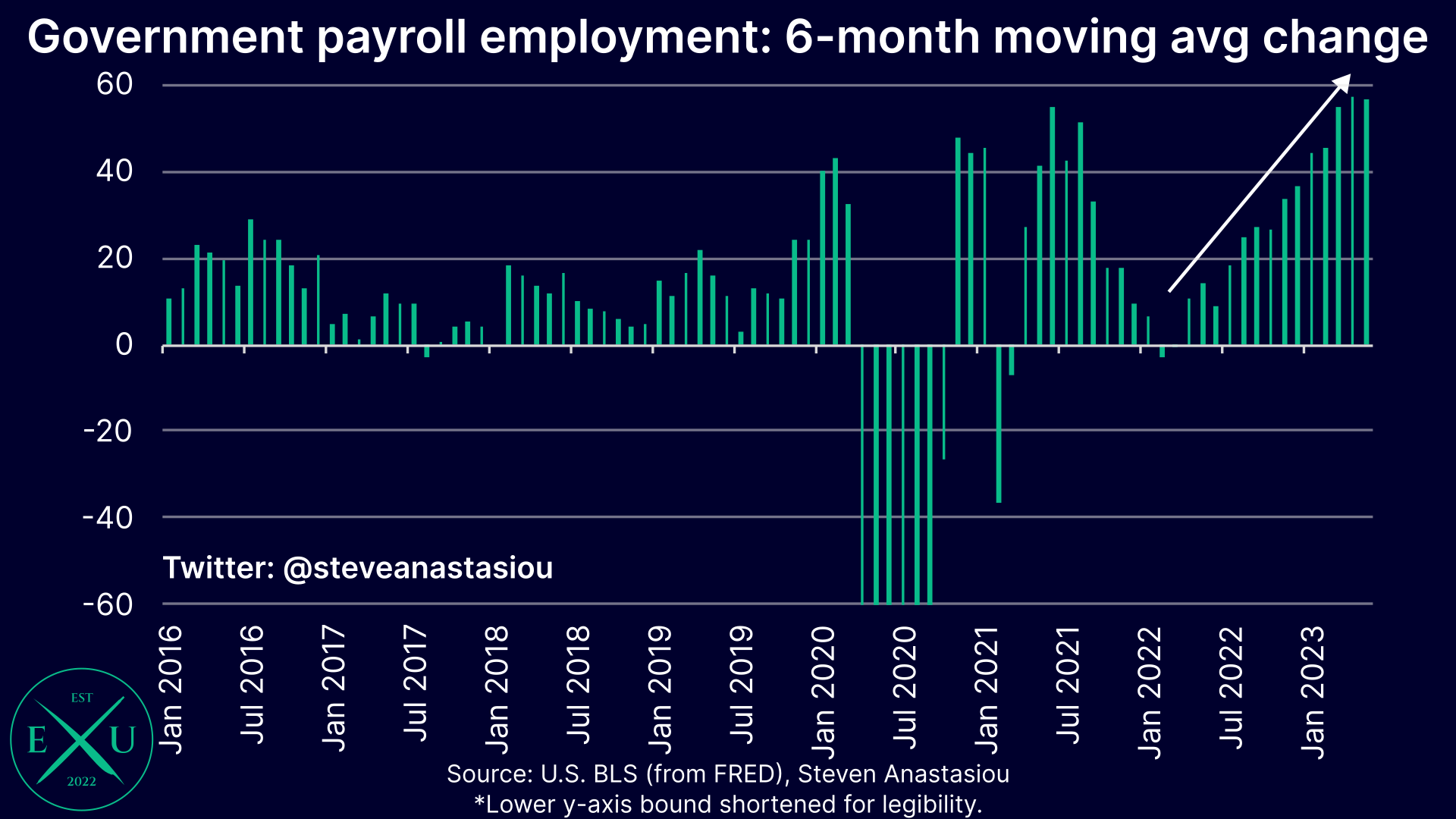
A weakening in private job growth is also being indicated by the BLS' private employment diffusion index, which has fallen back to its historical 2011-19 range, and continues to remain in a clear downtrend.
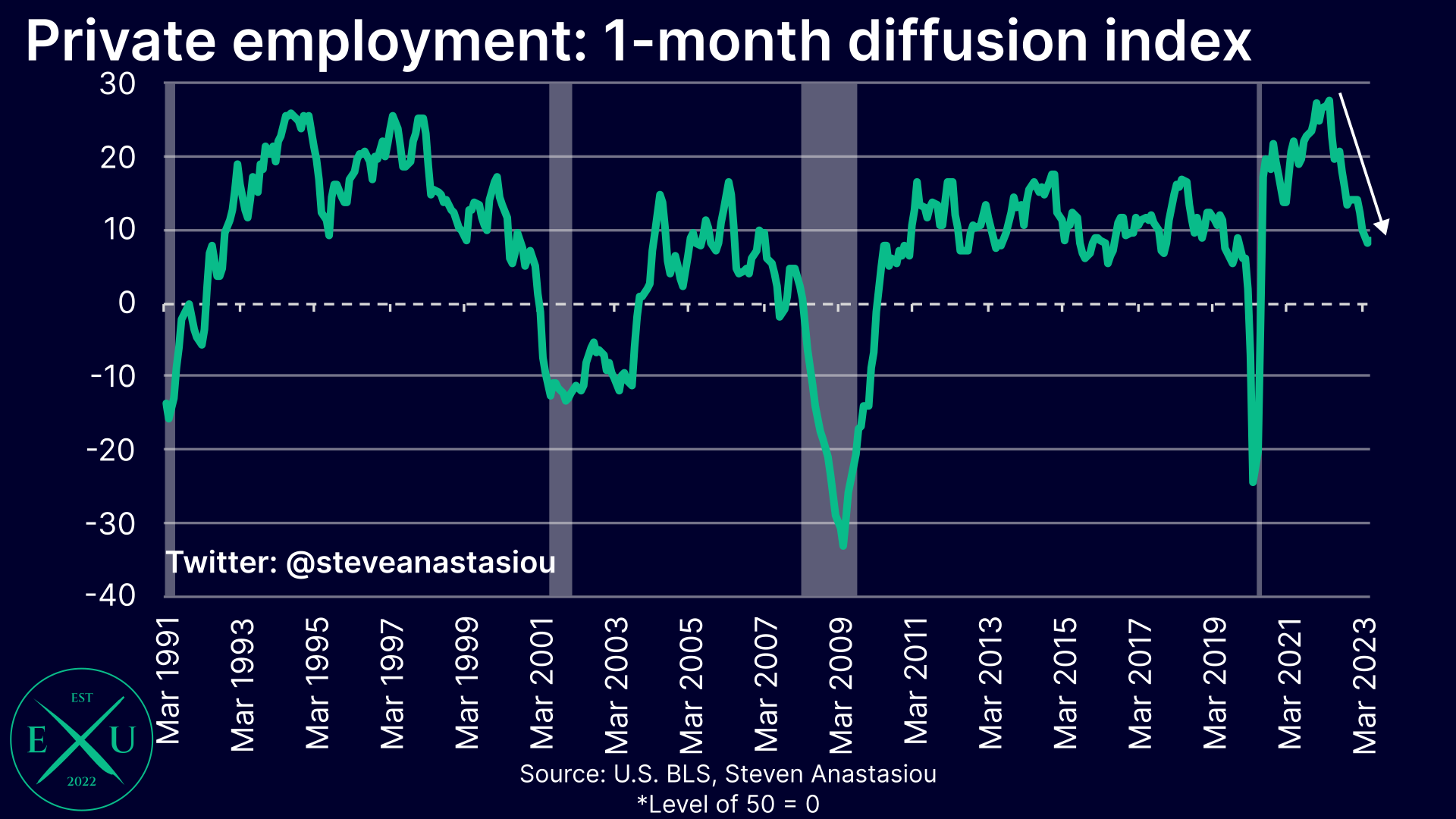
Turning towards average weekly hours, we can see that a more significant weakening has taken place, with average weekly hours dropping to 34.3 in May - the lowest level since April 2020.
A break below 34.2, would see hours worked hit lows that were seen during the GFC and subsequent economic recovery.
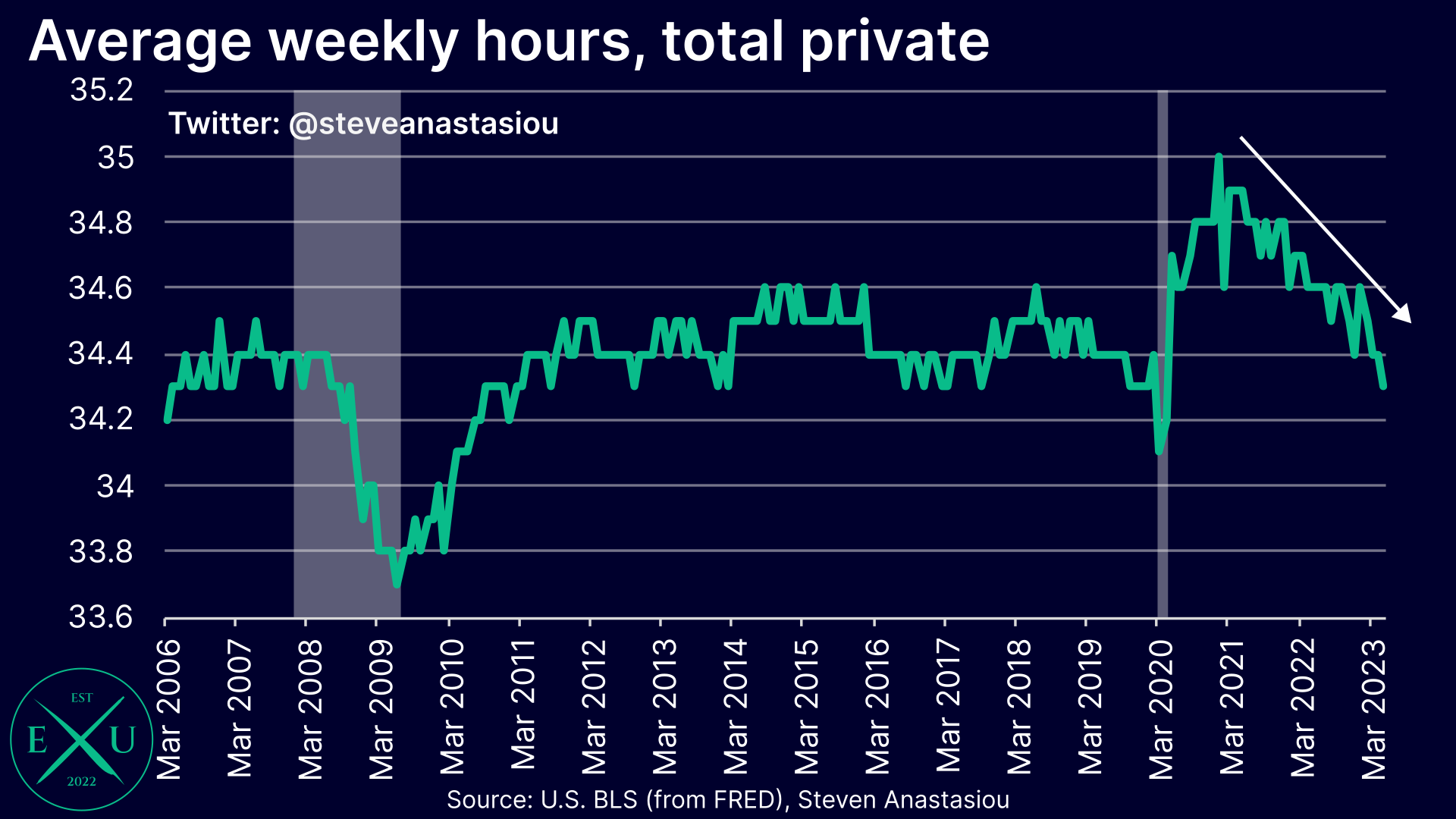
The average weekly hours metric is likely to prove particularly important during the current economic cycle, as measures of employment are likely to be particularly lagging.
The reason for this, is that many employers are likely to be particularly reluctant to layoff staff after having significant difficulty in finding enough staff to meet the prior surge in demand (which was artificially induced by an enormous increase in the M2 money supply).
Looking at more cyclical categories of employment, manufacturing employment declined for the second time in the past three months. 3-month moving average growth is now negative.

Temporary help services employment recorded annual growth of -2.6% in May.
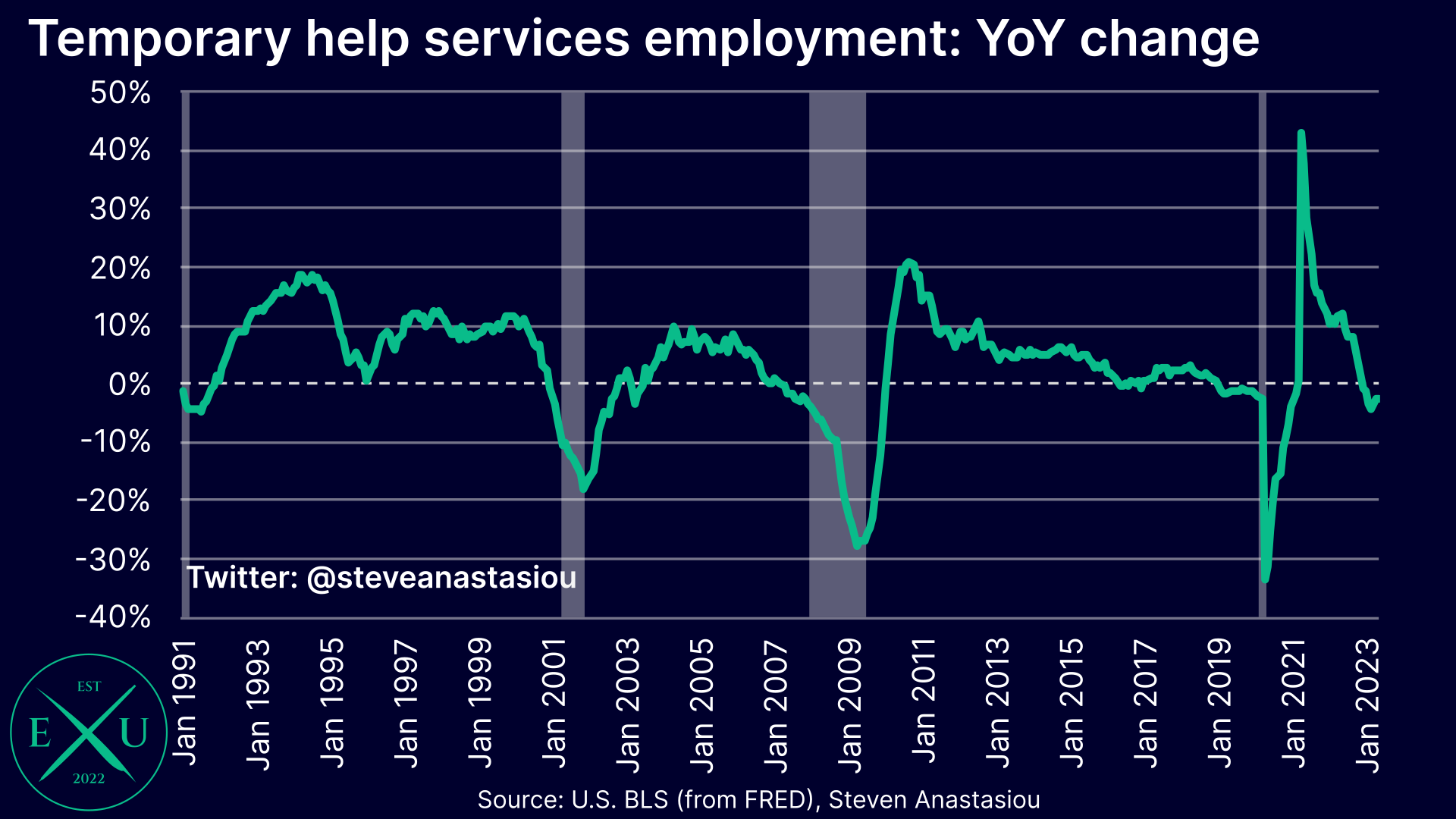
The Economics Uncovered Cyclical Employment index, which combines a number of leading categories of establishment survey employment, shows annual growth moderating to just 0.6% in May.

With cyclical employment indicators weakening significantly, the rate of quits has also fallen.
This indicates that 1) individuals are less confident of finding better work elsewhere; and 2) that there's less competition between firms to poach staff.
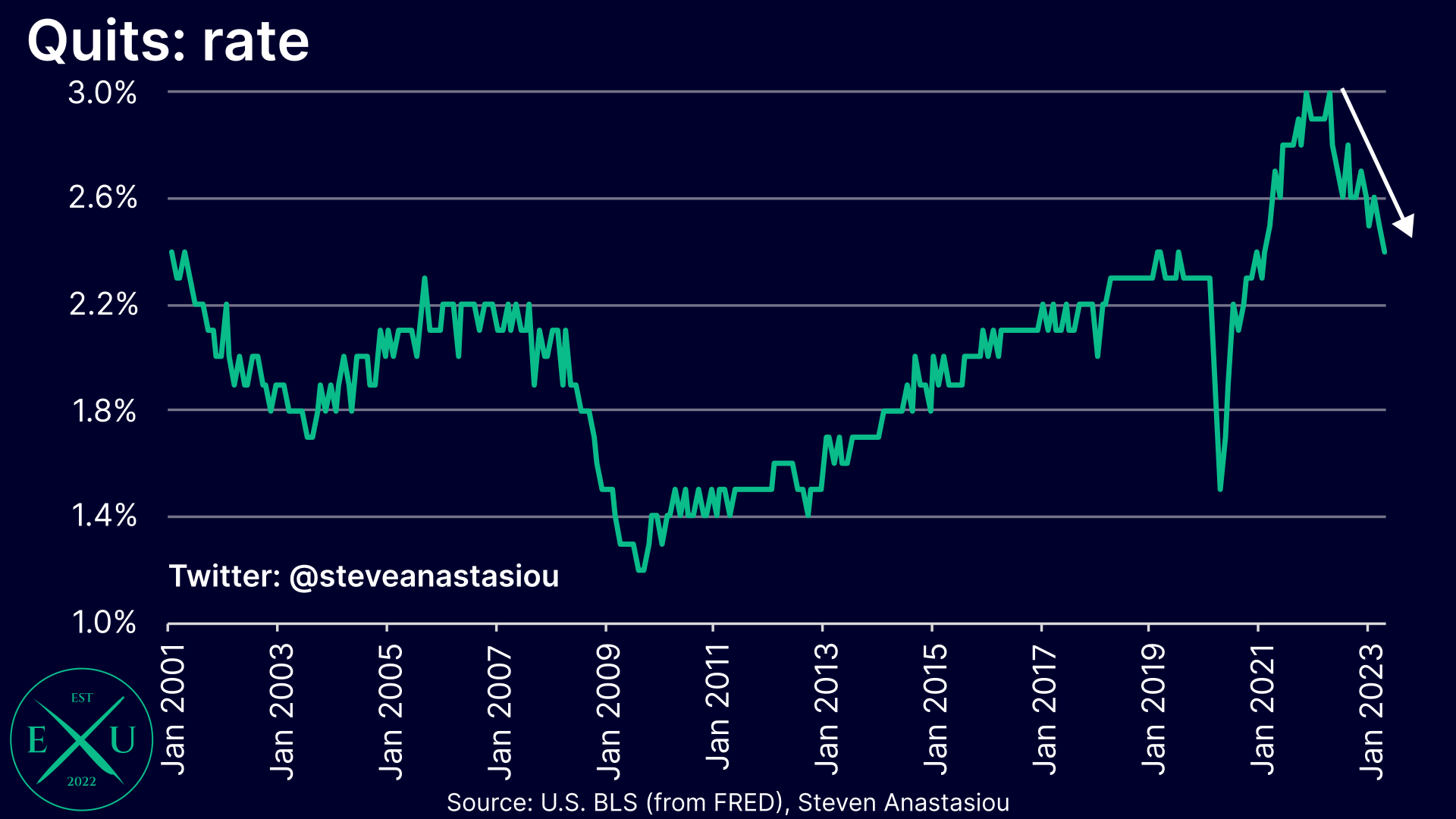
This is being corroborated by a decline in hiring rates.

Though despite the moderation, quits remain at a relatively elevated level, while the hiring rate hasn't fallen far enough to indicate a major deterioration in the employment market.
The relative robustness of quits and hires data is supported by layoff rates, which remain historically low.
Though remember, layoffs are likely to be a particularly lagging indicator during the current economic cycle, given the prior difficulties that employers had in reaching desired staffing levels.
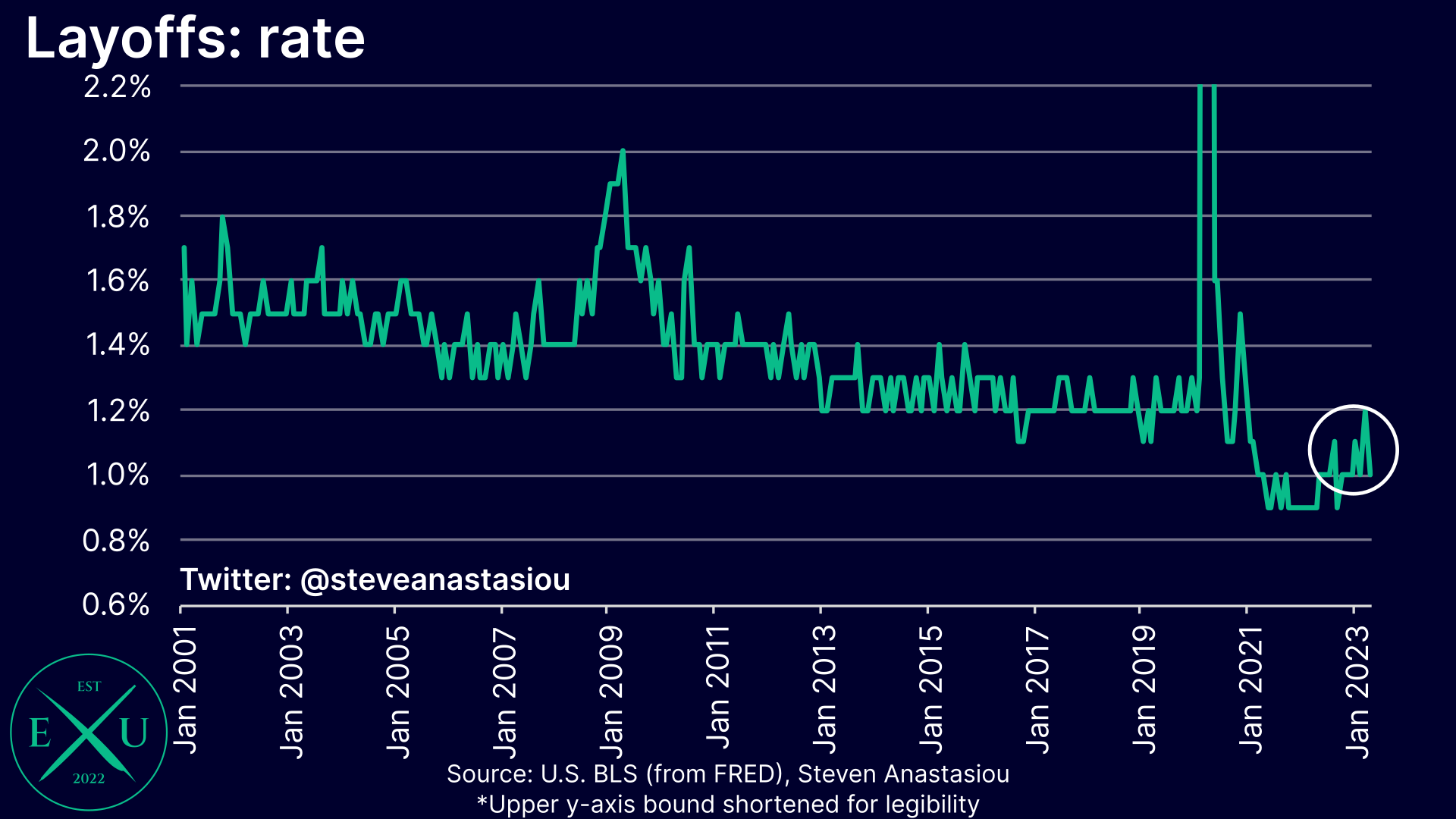
Putting it all together...
shows that there are clear signs of a weakening US employment market:
1) 6-month moving average nonfarm payroll growth remains in a downtrend;
2) private payroll growth has moderated even more significantly;
3) cyclical employment industries have seen growth turn negative/moderate very significantly; and
4) the rate of quits and hires continues to moderate.
Though despite the many indications of a weakening jobs market, overall, its current position remains relatively robust.
Unemployment remains relatively low. While decelerating, 3- and 6-month moving average nonfarm payroll growth remains at historically robust levels. The same is true for the rate of quits and hires.
Where to from here
In order to understand where the US employment market is likely to head from here, some broader context is needed. The most important context, is the Fed's policy position.
As is well known, the Fed has undertaken an aggressive tightening campaign, which has seen the federal funds rate increase by 500bps, and the M2 money supply record its largest declines since the Great Depression.
As history shows, this means that much higher unemployment is likely to lie ahead.
As opposed to suggesting that this time is different, low unemployment isn't a bug - it's a feature of most business cycles before the bust.
It's what prompts Fed tightening.
The bust follows with a lag.
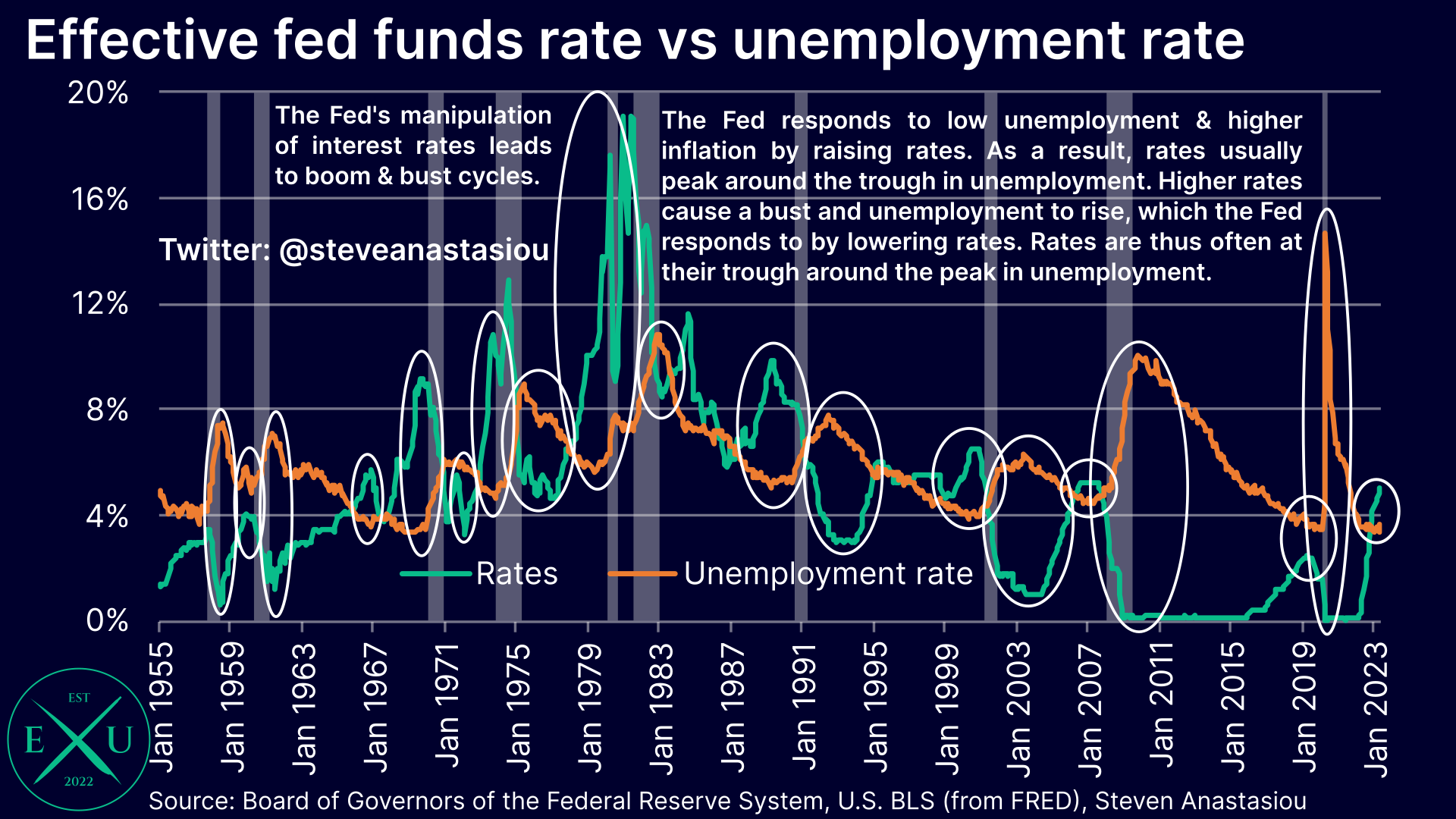
3 topics

